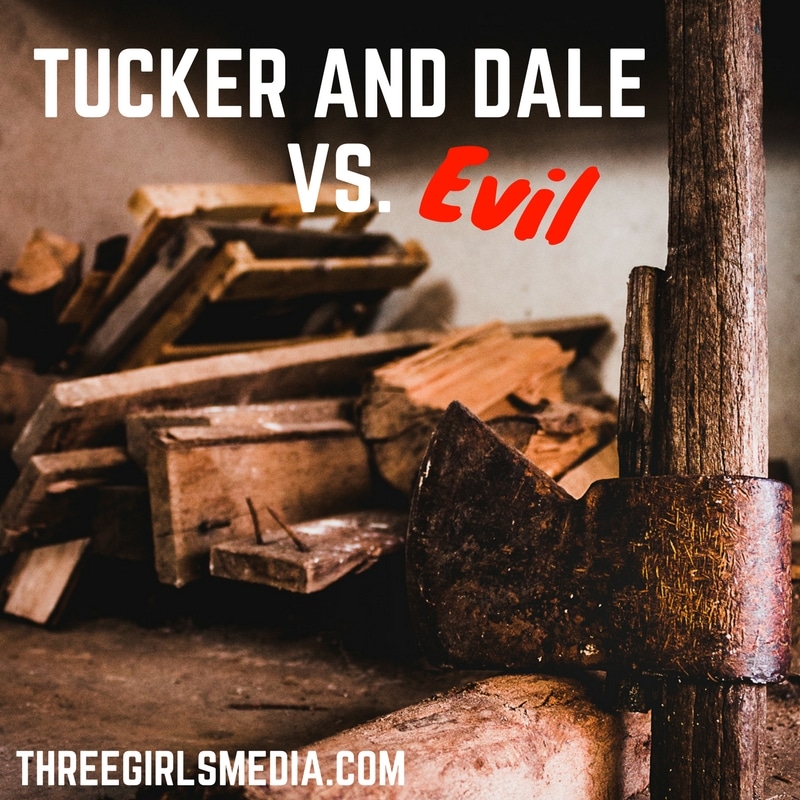In the world of communication, it’s a no brainer that clear and proper communication is important. While this is a fact of the business world, it was also one that began swirling around my head as I was watching one of my favorite movies of all-time, the 2010 Canadian horror comedy, ‘Tucker and Dale vs Evil.’ The film is filled with confusing situations and awkward encounters between two groups of characters in the woods, with many instances involving deadly miscommunications that only serve to throw gasoline on an already-burning fire of confusion.
Read on for a look into the seven biggest communication mishaps from the movie, and find out how these lessons can apply to your current and future public relations and marketing campaigns.
Tucker and Dale vs. Evil: A Story of Miscommunication
In the movie, a pair of hillbilly friends, Tucker and Dale, are headed out of the city to fix up Tucker’s new vacation home and enjoy a quiet weekend deep in the woods, drinking PBR and fishing to their heart’s content. Unfortunately, a group of college students is also headed up to their neck of the woods, and they plan on having fun like only co-eds can do.
The two groups initially meet at a last-chance gas station, and the students accidentally mistake Tucker and Dale for backwoods murderers. Little do they know that this is the furthest thing from the truth, and a series of deadly consequences stems from their unwarranted terror. Along the way, the film is laugh-out-loud funny, mixing classic stereotypical horror scenes with humor.
Here are seven of the biggest lessons I learned from the movie that are crucial to communicating not only in the film, but also in the PR and marketing world.
7 (Mis)Communication Lessons from ‘Tucker and Dale vs. Evil’
-
Don’t Ignore the Warning Signs – Stay on Top of Your Progress
In ‘Tucker and Dale vs. Evil,’ warning signs are both ignored and overanalyzed, at the same time. On the one hand, the group of college kids mis-reads every “warning sign” they come across, leading them to think Tucker and Dale are evil murderers, when in fact, the students are just paranoid. However, they fail to ignore their own internal warning signs that a friend in their group is beginning to lose his mind. As he descends deeper and deeper into madness, the group of friends fails to reign him in, leading to deadly consequences as the situation boils out of control.
How is this related to PR and marketing? In your public relations campaign, it’s important to analyze potential warning signs and interpret them the right way. For example, if your website analytics seem out of whack, try to immediately resolve the problem and find out why. Likewise, if you experience negative customer feedback on social media, attend to their issue quickly and gracefully, but also be on the lookout to see out if this could be a sign of a larger issue and, if it is, make sure you take the steps to remedy it.
-
Use Impeccable Grammar
Although this miscommunication is not the result of ignorance, rather a lack of education, Tucker and Dale’s poor grammar drives the story forward, fanning the flames of confusion. After rescuing one of the college kids, Allison, after she falls in the lake and hits her head, Tucker and Dale save her from death, and take care of her in their vacation house. However, the group of co-eds sees them rescuing Allison and instead thinks they are kidnapping her. To try and let them know that Allison is safe, Tucker carves a message into a fallen tree log: “WE GOT UR FREIND.” Obviously, this confusing message can be taken two ways:
- That Tucker and Dale are caring for Allison, and they want to let her friends know she is safe
- That the men have stolen her and are leaving a threatening warning to the rest of the group, signaling that they are next
Unfortunately, the college kids interpret the message the second way, with grave consequences.
As you can see, grammar and spelling may not be the most important aspects of verbal communication, but they are certainly crucial to written communication. In your PR strategy, you should aim to be as clear as possible, and use impeccable spelling and grammar. Otherwise, you run the risk of confusing your audience, just as the characters in ‘Tucker and Dale vs. Evil’ were confused. Which leads us to…
-
Don’t Underestimate Confusion
It’s important to remember that there are two sides to every story. In ‘Tucker and Dale vs. Evil,’ the narrative switches from the perspective of Tucker and Dale to the college students at a moment’s notice, each analyzing the others activities with the distortion of confusion. It may seem like confusion is not really a serious problem, but in the film, it not only drives the story further, but causes many things to happen that could have been avoided with clear communication.
Your marketing strategy is not immune to confusion. Because of this, it’s important to look from the outside in, evaluating your strategy from an outsider’s perspective. One simple way to do this is to hire an outside PR firm as a partner. When someone else can see your strategy from outside your company’s perspective, new ideas and opportunities may come to light and confusing messaging can be remedied. Contact Three Girls Media today for assistance with this.
-
Don’t Jump to Conclusions
Jumping to conclusions is a common miscommunication in ‘Tucker and Dale vs. Evil;’ over time, both character groups begin to assume the other is crazy. With the initial mistaken identity of Tucker and Dale as murderous hillbillies, the college kids make grave mistakes that not only cost them their fun weekend in the woods, but for many of them, their lives. Of course, your public relations strategy may not have such high stakes, but it’s still important to avoid jumping to conclusions, whether about your consumers’ habits or the media’s expectations.
-
Use Humor
While ‘Tucker and Dale vs. Evil’ is a horror movie, it’s also a hilarious comedy. Throughout the film, there are jokes, comedic stereotypes and subtle nuances that add to its appeal. Because of this, the movie was wildly successful and has accumulated a huge cult following.
Your marketing strategy should also aim to use humor as a way to connect with your audience, whether it be through telling jokes on social media, creating and sharing a funny company video or reposting a topical meme.
As Hal Rothberg told Entrepreneur, “Marketing with wit has several benefits. It gets customers’ attention, and it makes the message you’re sending more digestible and easier for them to remember. Plus, a wisecrack here and a pun there make your company seem more human, warming your audience up and making them more receptive to your sales pitch.”
-
Timing is Everything
If a lack of communication wasn’t enough, almost all of the characters in ‘Tucker and Dale vs. Evil’ suffer from poor timing. Many situations in the film were bad already, but were complicated or made worse when the wrong person shows up at the wrong time. From the college kids’ misinterpretation of Allison’s rescue, to a police officer finally showing up at the wrong moment, the movie is filled with unfortunate events.
We know we can’t control everything. Because time is not always on your side, it’s helpful to be prepare for every situation before it has the opportunity to arise. Maybe you’ve never received negative social media feedback from your fans – that’s great news! But it’s still a good idea to draft a response just in case that time arrives in the future.
-
Fix Issues as They Arise
Have you been ignoring an issue with your marketing, no matter how small? It’s important to fix problems when they arise so they don’t become worse down the road. In ‘Tucker and Dale vs. Evil,’ there’s a slight problem with Tucker’s vacation home in the form of a loose beam in the middle of the room. In the beginning of the movie, Tucker leans on it and a rusty nail almost hits him in the face. Later in the film, not fixing the problem comes back to haunt one of the characters. Learn from his mistake; don’t ignore a strategy that isn’t working or ignore a customer service complaint.
‘Tucker and Dale vs. Evil’ is a great example of what can happen when communication breaks down. As Tucker says when the situation takes a turn for the worse, it doesn’t matter what happened, it matters what looks like what happened. Keep this in mind in case of a crisis; when your external message is handled improperly, your company’s reputation may suffer if customers believe rumors or hear a twisted version of the story.
For more PR and marketing insights from movies and TV, I recommend these other articles from the Three Girls team:
- 7 Terrific Public Relations Tips from the TV Show ‘White Collar’
- Can You Keep a Secret? Digital Marketing Tips from “Pretty Little Liars”
- Out of Marketing Luck? 6 Lessons from ‘Schitt’s Creek’
- 8 Smart Public Relations Lessons from ‘Orange is the New Black’
- 5 Helpful Marketing Tips from the Gilmore Girls Revival
Special Offer:
Sign up for a complimentary consultation during December and receive an Annual Marketing Planning Guide valued at $475! We offer a 30-minute phone consultation with our CEO, and can answer your questions and discuss your specific marketing needs - no strings attached. Call 408-218-2391 or contact us today to arrange your consultation!




